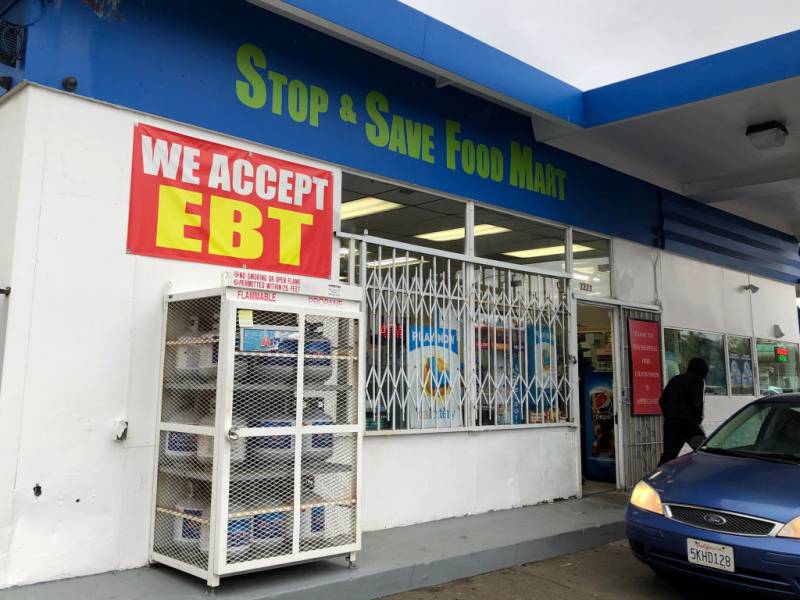President Biden says he aims to end hunger and food insecurity in the United States by 2030. Next week the White House Conference on Hunger, Nutrition and Health will consider the policy changes needed to reach that goal. The last conference on hunger and health was in 1969 during the Nixon administration, and it led to many of the nation’s major health policies like child nutrition assistance and food stamps. We’ll talk about what hunger and food insecurity looks like in the U.S. now, and what it would take to ensure no Americans go hungry.
What It Would Take to End Hunger in the U.S.

RICHMOND, CALIFORNIA - DECEMBER 04: A sign noting the acceptance of electronic benefit transfer (EBT) cards that are used by state welfare departments to issue benefits is displayed at a convenience store on December 04, 2019 in Richmond, California. (Photo by Justin Sullivan/Getty Images)
Guests:
Ahori Pathak, director of policy, Poverty to Prosperity Program at Center for American Progress
Kassandra Martinchek, research associate, Urban Institute
Dariush Mozaffarian, cardiologist and professor of nutrition, Friedman School of Nutrition Science and Policy at Tufts University; co-chair of the Task Force on Hunger, Nutrition and health - an independent task force working to help inform the White House Conference
Sponsored